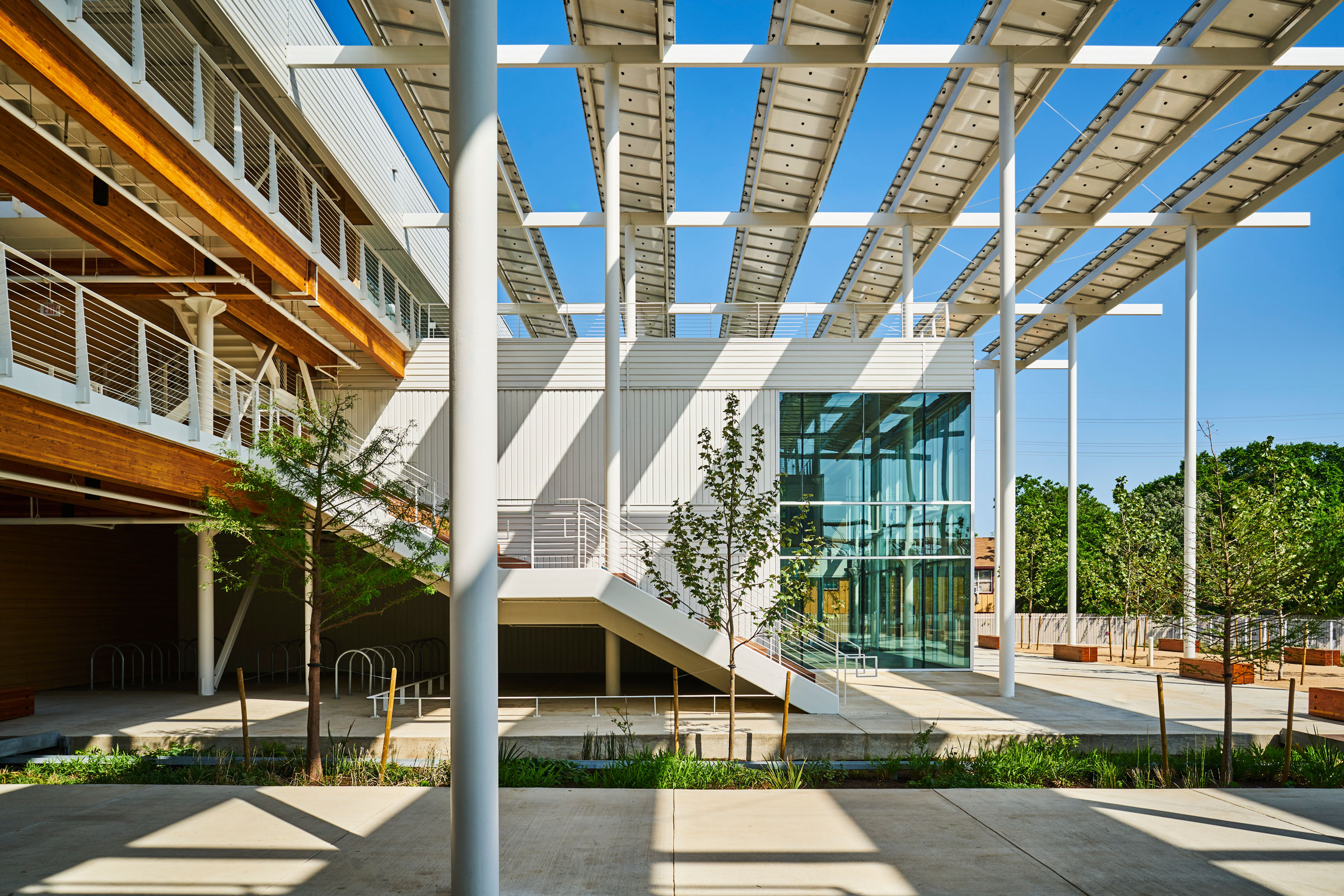Story at a glance:
- Parapet roofs have been around for centuries and feature a low barrier wall around their edges.
- Including a parapet roof in modern building design comes with a host of benefits, from safety and privacy to aesthetics.
- Parapet roofs come in a variety of shapes and configurations, with the most common utilizing plain, flat parapet walls.
A striking, modern roof design is a surefire way to make a building stand out. And though there are many ways to build a strong and beautiful roof, one common roofing technique has stood the test of time: the parapet roof.
Parapet roofs have been around for centuries and add both security and design flair to buildings.
In this article we’ll explore how parapet roofs have transcended time, the various types and styles of parapets, and the benefits that solidified their design legacy.
What is a Parapet Roof?
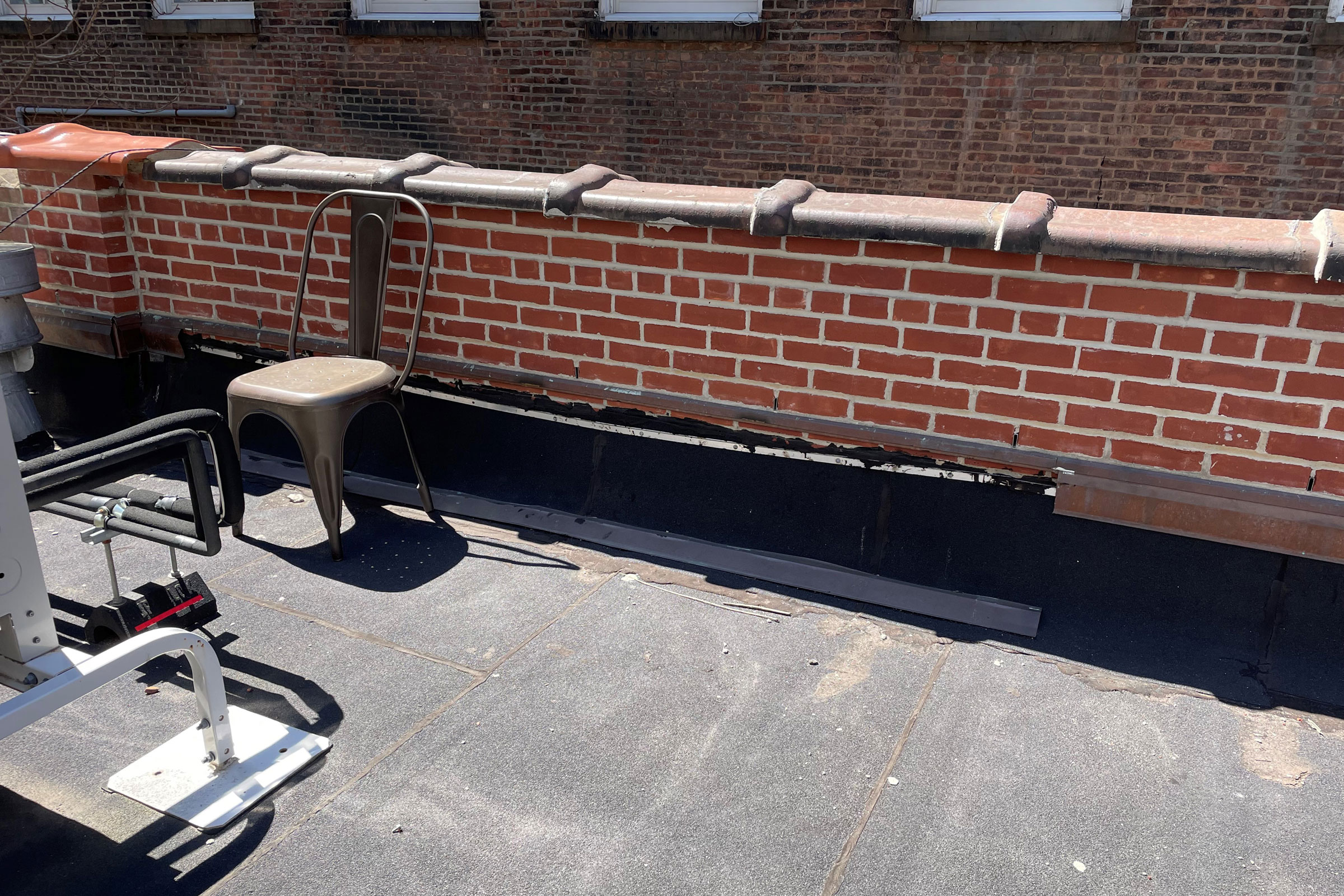
Parapet roofs feature low barrier walls around their edges as a means of concealing equipment, preventing accidents, and protecting against wind-uplift. Photo courtesy of Bellet Construction
A parapet is a low protective barrier that is an extension of the wall at the edge of a structure, such as a roof, balcony, terrace, walkway, or bridge. In a parapet roof a low barrier wall is erected from the roof itself.
A parapet may be constructed from a range of building materials, though the most common are stone, brick, reinforced concrete, and metal. The height of parapet roofs may vary but the International Building Code (IBC) requires that parapets be no less than 30 inches above the point where the wall and roof surface intersect—though a height of 42 inches is generally considered ideal for safety purposes according to OSHA guidelines.
And while the IBC does not specify a minimum thickness for parapet walls, most experts agree that they should be at least six inches thick. A weather-proofing membrane, flashing/coping, and continuous insulation should always be installed in conjunction with parapet walls to prevent moisture damage and energy leakage.
Today the parapet roof’s main objective is to protect against the elements and prevent those standing behind it from falling—but that wasn’t always the case.
A Brief History of the Parapet Roof
Historically parapet roofs were employed primarily as a defensive measure atop castles, forts, towers, and city walls to help keep invaders out. The term itself comes from the Italian parapetto, which is a combination of the words parare (to defend/cover) and petto (breast/chest), and essentially means “to defend the chest.”
Archaeological evidence suggests that parapet roofs have been in use since at least 1340 BCE, as shown by various temples and temple complexes built throughout Egypt during the 18th Dynasty (1550 – 1292 BCE). The parapet roof has been used in Middle Eastern and Northern African architecture for thousands of years and remains a common feature to this day.
Parapet roofs became a staple of European fortification architecture during the Medieval Period (476 to 1450 CE) and were often crenelated or sported loopholes through which defending archers could fire upon an invading force without exposing themselves to returning fire.
In North America parapets are a defining feature of structures built by the Ancestral Puebloan peoples who inhabited the southwestern region between 100 – 1600 CE and appear heavily in the cliff dwellings populating Mesa Verde National Park. To this day parapets remain a key element of the Pueblo and Pueblo Revival styles of architecture. There is also evidence of parapets being implemented in the pre-colonial architecture of Central and South America, as shown by the numerous parapets ringing Tenochtitlán—the Aztec capital founded in 1325 CE—and the linear parapets found at Machu Picchu, an Inca citadel built around 1450 CE.
During the early 1500s Spanish and Portuguese colonists would bring parapets to North, Central, and South America en masse, where they became a core element in both the Spanish Colonial and Mission architectural styles. Over the course of the 1700s and 1800s, English, French, Dutch, and German settlers introduced parapets to the eastern United States, where they became defining features of the Georgian, Neoclassical, and Gothic Revival styles of architecture.
Today parapet walls can be found on most commercial buildings, residential complexes, schools, and really just about any building with a flat roof.
Benefits of a Parapet Roof
Although architects and designers may no longer use a parapet roof to protect buildings from invaders and secure city borders, parapet roofs come with other design benefits to strengthen buildings and improve their facades.
1. Parapet roofs increase roof stability and prevent wind-uplift.
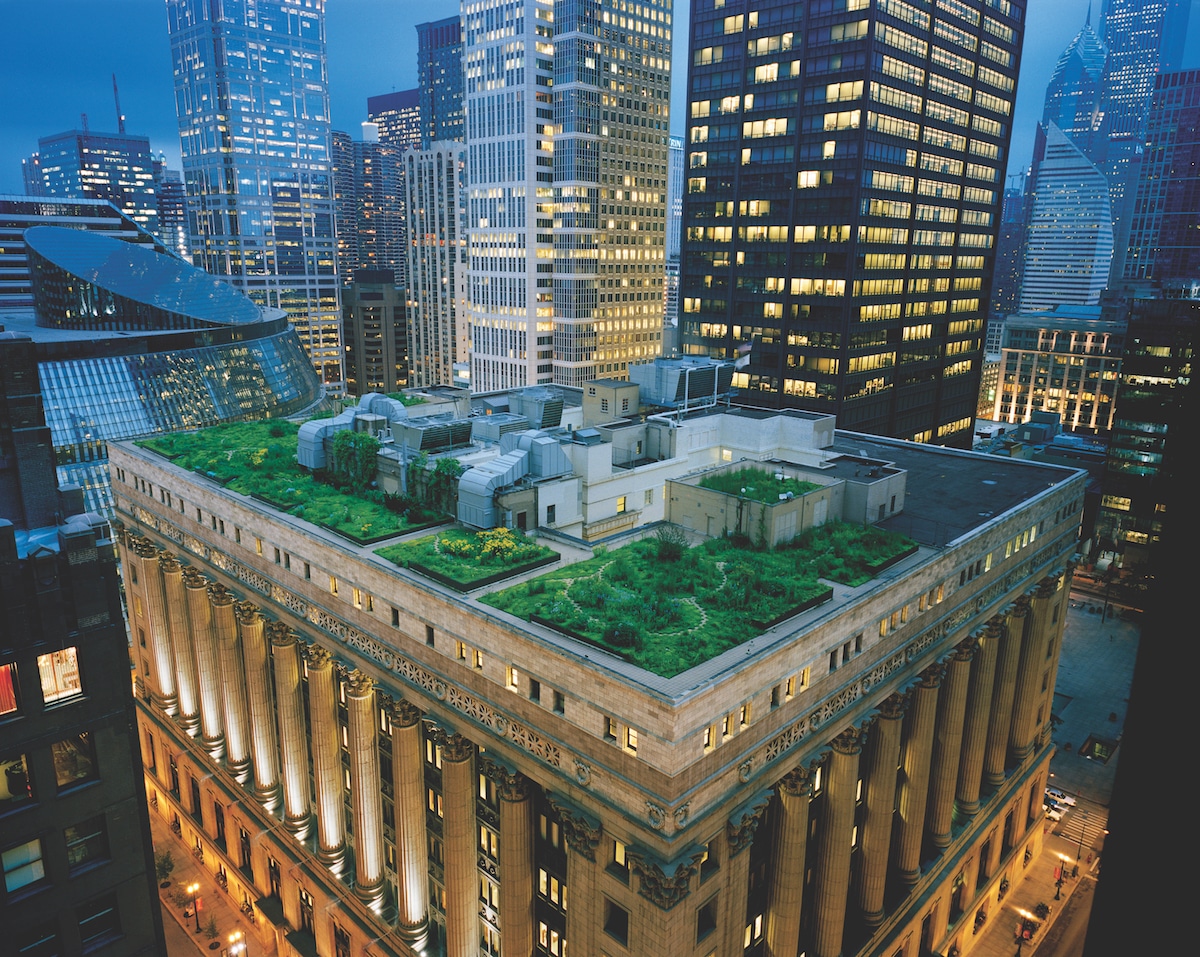
The low parapet walls atop Chicago’s City Hall help protect the roof from wind-uplift and made the installation of a green roof possible. Photo courtesy of Sika Sarnafil
When wind blows against a building, it can create what’s known as wind-uplift, where the pressure below the roofing system is higher than the air pressure above the roof. During high-wind periods, these pressure changes can be dramatic and weaken the roof system, eventually causing it to collapse or forcing it to peel off altogether.
One of the biggest benefits of a parapet roof is that it provides a barrier to these catastrophic wind events, which can in turn help mitigate pressure changes caused by wind-uplift and thereby fortify the strength of the roof as a whole.
This also improves the viability of installing a vegetated green roof, as parapets help block wind that would otherwise put undue stress on plants and increase rates of soil erosion.
2. They also help protect against other extreme weather.
Besides wind, a parapet roof can strengthen a building’s facade against hurricanes, thunderstorms, and other damage-causing weather. Parapet roofs also provide a barricade against storm debris like tree branches and block objects from coming into direct contact with the roof.
As long as they are properly designed and installed, parapet walls will not impede stormwater drainage but funnel runoff through scuppers—or rectangular outlets—into gutters and downspouts.
3. Parapet roofs increase occupant safety.
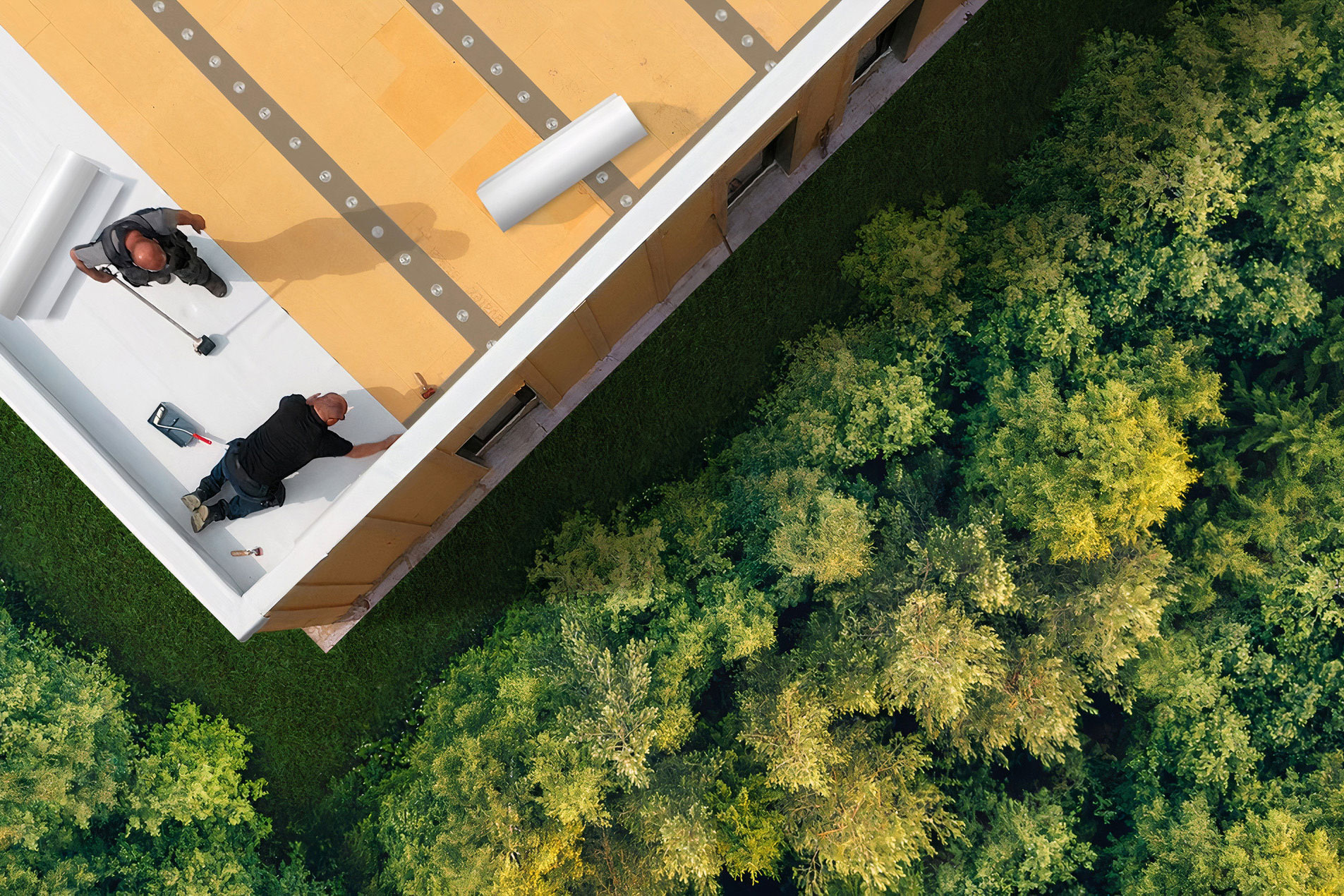
Parapet walls reduce the risk of falling over the side of a building, making roof maintenance a much safer task. Photo courtesy of Leadax Roov
Just as a parapet roof protects a building, it can also protect those inside. A sufficiently tall parapet—or one measuring at least 42’ in height—functions similarly to a barrier or guardrail and helps prevent occupants from falling over the side of a building. This makes roof maintenance much safer and can open up the roof for additional uses (e.g. outdoor dining space, rooftop garden or terrace, et cetera) depending on the type of building.
4. They offer fire protection.
On a parapet roof, the parapet extends above the roof plane. This can stop a fire from coming up the exterior of a building and immediately setting the roof membrane aflame. The IBC also requires that all parapets possess the same fire-resistance rating as that required for the supporting wall and that they be constructed of non-combustible materials for the uppermost 18 inches (including any flashing and coping).
5. Parapet roofs give buildings a unique design element.
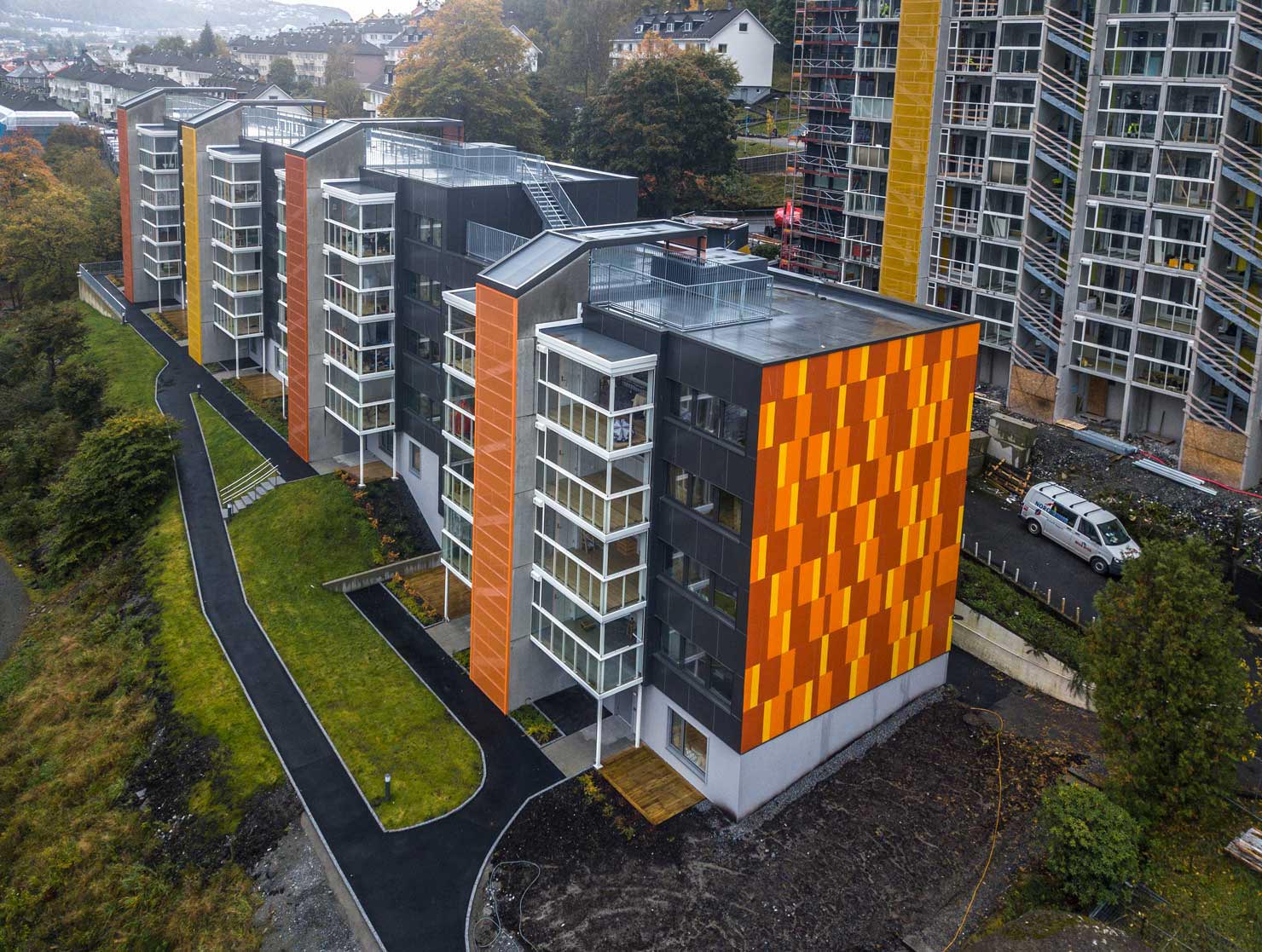
The colorful facade on this residential complex in Norway extends all the way up the face of the building and its parapet roof. Photo courtesy of Arkitektgruppen Cubus AS
Far from ancient battlements, modern parapet roof design has enabled architects to create parapet roofs in a variety of shapes and forms to align with any aesthetic. Parapet roofs can also make buildings appear taller than they are, helping them to stand out or fit in with surrounding structures. Beyond ornamental advantages a parapet roof can also increase curb appeal by hiding rooftop equipment like HVAC units and vents.
Types of Parapet Roofs
Parapet roofs are made up of parapet walls that encase the roof. Parapet walls are classified into four main groups: embattled, plain, perforated, and paneled parapet walls.
Embattled Parapet Walls
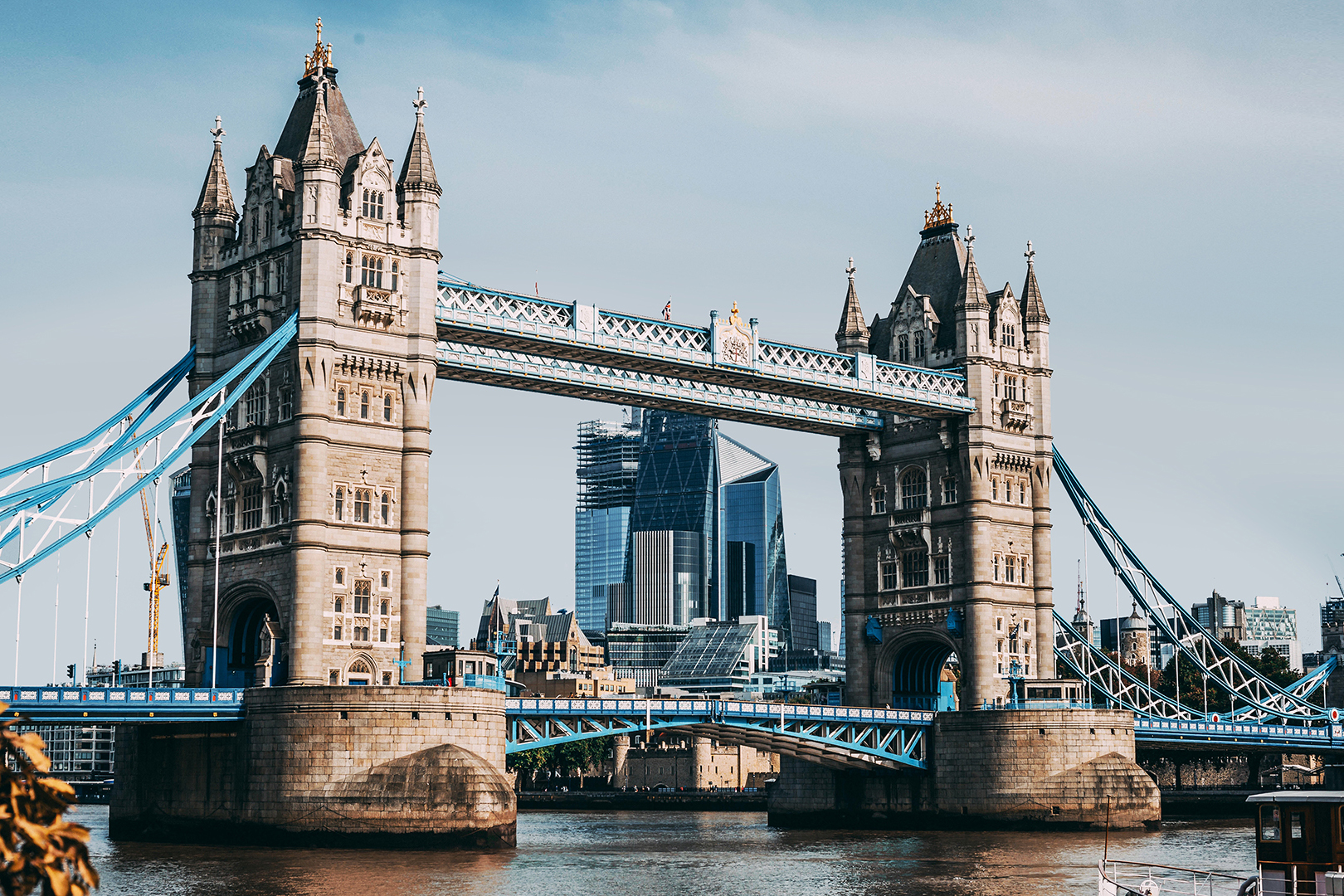
The Tower Bridge in London makes use of multiple embattled parapets in its design. Photo courtesy of Bloom & Wild
Embattled parapet walls are the parapet roofs of yore. This historical roof design is what may come to mind when you think of castles, keeps, and other medieval fortifications. The alternating high ridges (merlons) and low ridges (crenellations) of the parapet were used as a defensive strategy, from which archers could both hide behind and fire upon an oncoming enemy or invader.
For obvious reasons the embattled parapet wall is largely absent from new construction projects, though existing versions can still be found throughout Eurasia and parts of Northern Africa, as well as in Central and South America.
Plain Parapet Walls
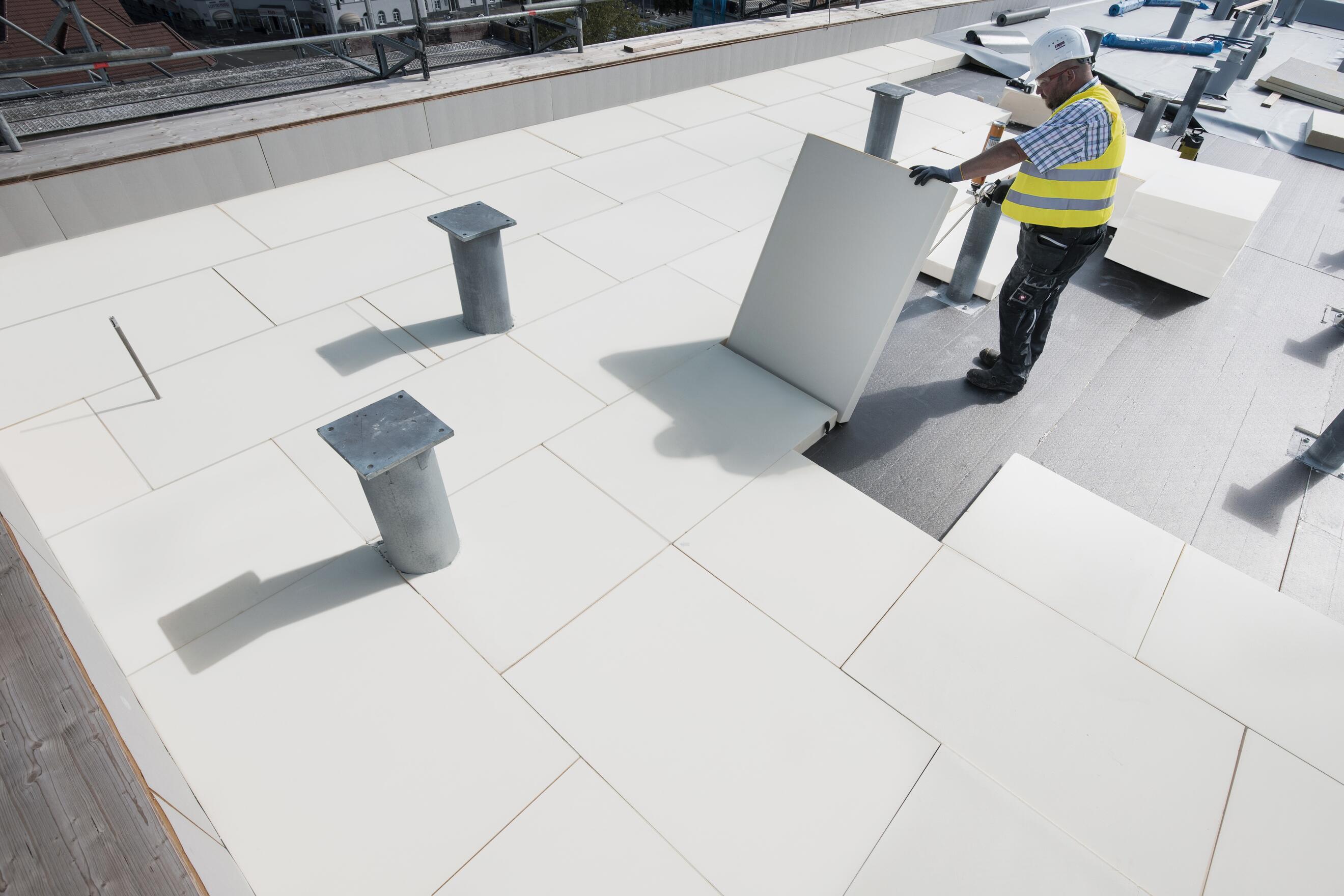
The plain parapet walls along the edge of this roof help to hide rooftop equipment and protect it from wind damage. Photo courtesy of Covestro
Plain parapet walls are the most common type of parapet roof in modern buildings. Unlike embattled parapet walls, plain parapet walls are simply vertical extensions of the wall at the edge of a roof. They are less decorative and largely incorporated into a building’s design for safety and privacy, though the addition of ornamental corbels—or structural pieces of stone, concrete, metal, wood, et cetera used to support superincumbent weight—along the base of a plain parapet can help to improve their appearance.
Plain parapets were an extremely common feature in the Georgian style of architecture (1714 – 1830 CE), as they provided a convenient means of concealing the roof and gave buildings a highly-symmetrical, rectangular appearance when viewed from the street level.
Perforated Parapet Walls
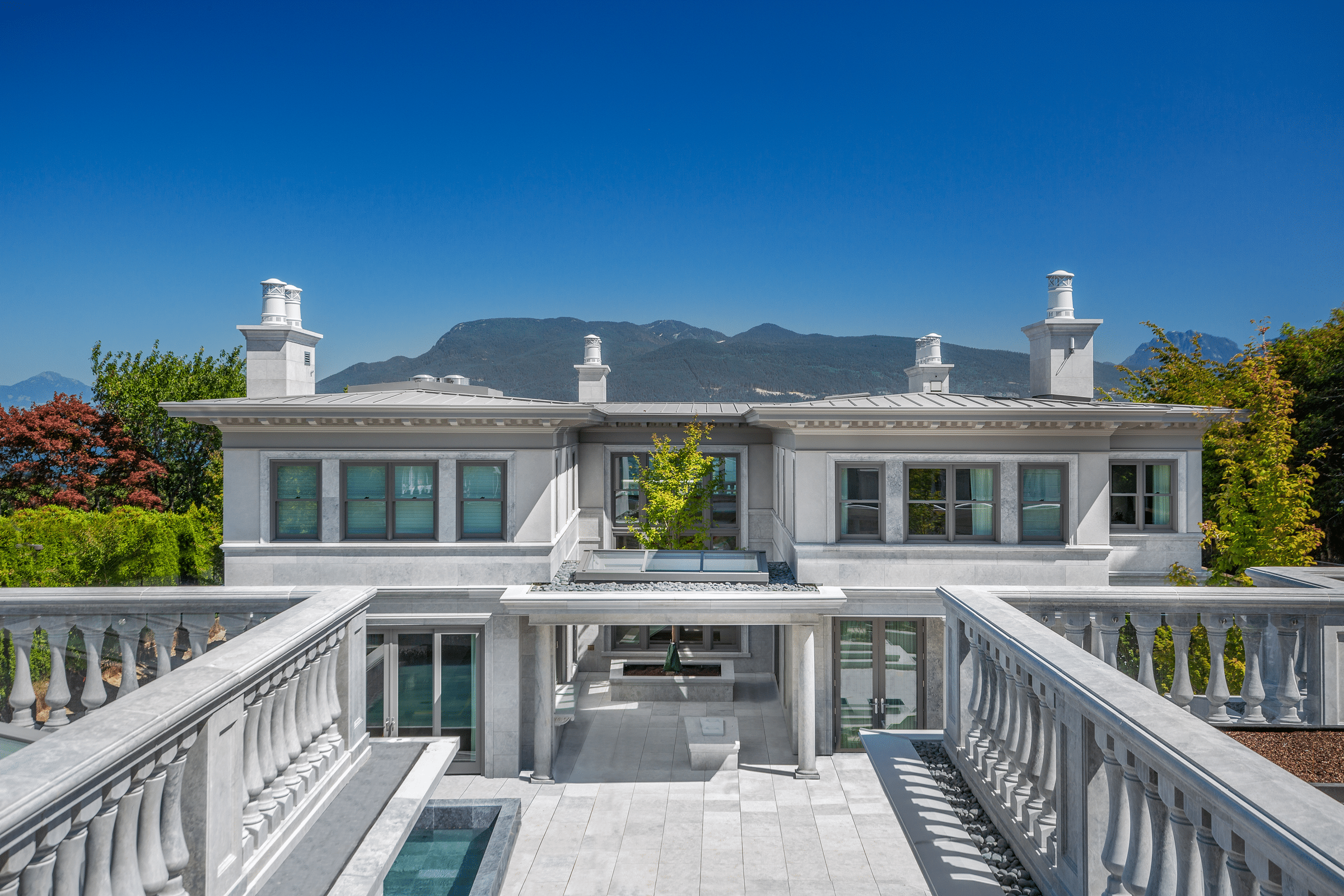
This neoclassical private residence in Vancouver makes use of perforated balustrade-style parapet walls. Photo courtesy of Polycor
In contrast to the simple design of plain parapet walls, perforated parapet walls are, as the name implies, perforated with different-sized openings to create an ornamental design, such as a geometric or floral pattern. Many buildings constructed in the Neoclassical and Early Renaissance styles incorporate perforated parapet walls.
Paneled Parapet Walls
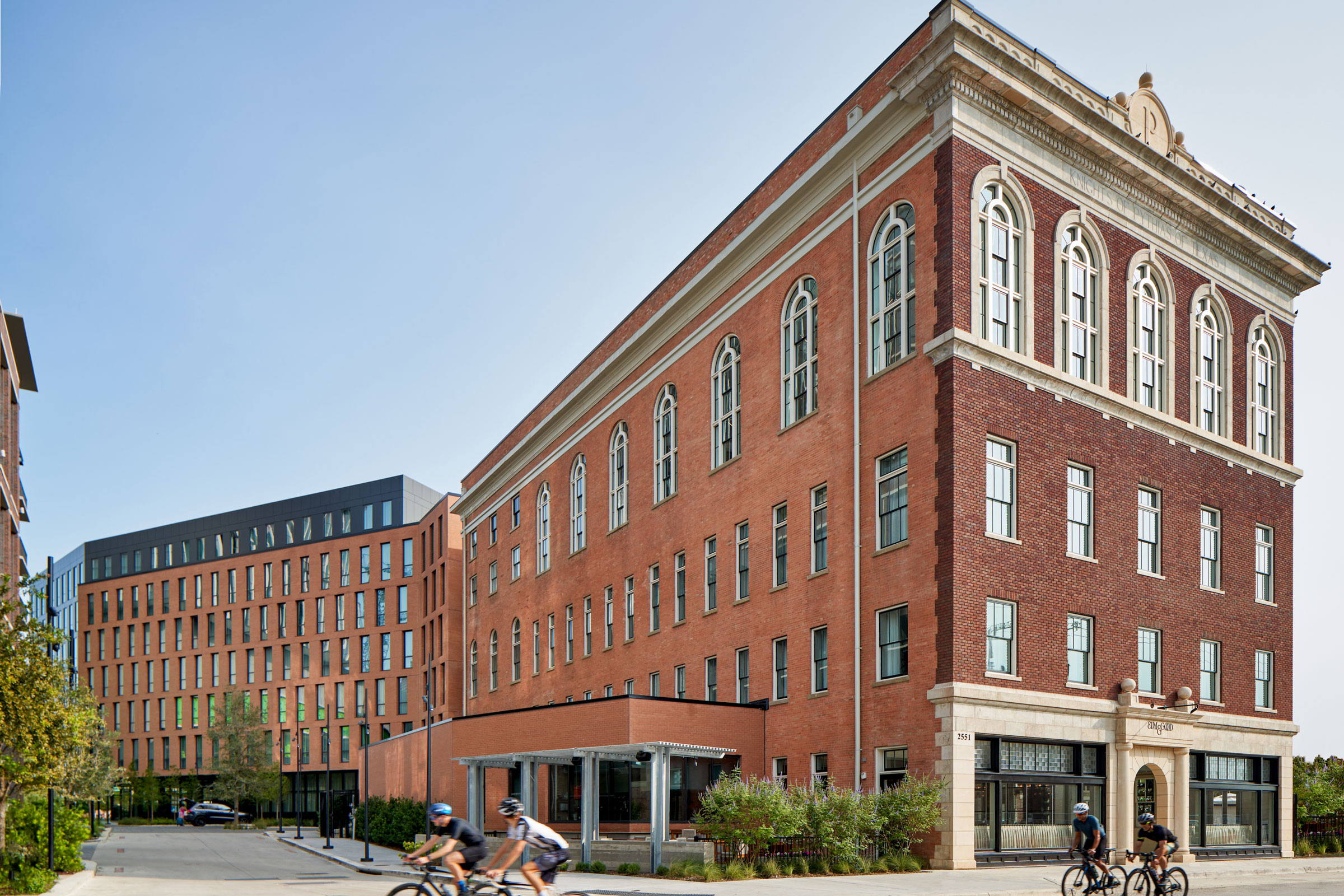
The street-facing side of the Pittman Hotel in Dallas features a paneled parapet wall that transitions into plain parapet walls on either side. Photo by Leonid Furmansky
Paneled parapet walls also provide ornamentation to a building facade. Sometimes referred to as “double walls,” paneled parapet walls are similar to plain parapets but include a decorative panel on the exterior wall. These panels are typically oblong or square in shape and do not include any perforations.
Parapet Roof Shapes
Parapet roofs are also characterized by the shape of their walls: flat, sloped, stepped, and curved.
Flat Parapet Walls

Bellet’s work on the Meisel Gallery Building included repairs to the parapet roof. Photo courtesy of Bellet Construction
When you think of a parapet roof, you are most likely thinking of a flat parapet wall. With its straight-lined edge, flat parapet walls are the most common parapet roof shape and are used for buildings with flat roofs.
Despite their name, however, flat parapet walls are very rarely completely flat—in fact, most feature a gently-sloped top, called coping, that helps prevent water from accumulating and which generally serves to protect the parapet from moisture damage, weathering, and exposure to ultraviolet light.
Sloped Parapet Walls
Sloped parapet walls are used on buildings with angled roof designs, such as a gable roof. The sloped parapet follows the pitch of the roof itself. A parapet roof with sloped walls is often installed purely for aesthetic reasons.
Stepped Parapet Walls
Stepped parapet walls are also largely used for sloped-roof structures. More common in older buildings, they follow the slope of the roof, but unlike sloped parapet walls’ smooth, straight edge, stepped parapet walls follow a staircase design.
Stepped parapet walls can also be used on flat roofs. In this case the parapet’s base remains flat with the surface of the roof, but the wall itself staircases up and builds to an apex. Like sloped parapets, stepped parapet walls serve primarily as aesthetic and protective features rather than a means of improving safety.
Curved Parapet Walls
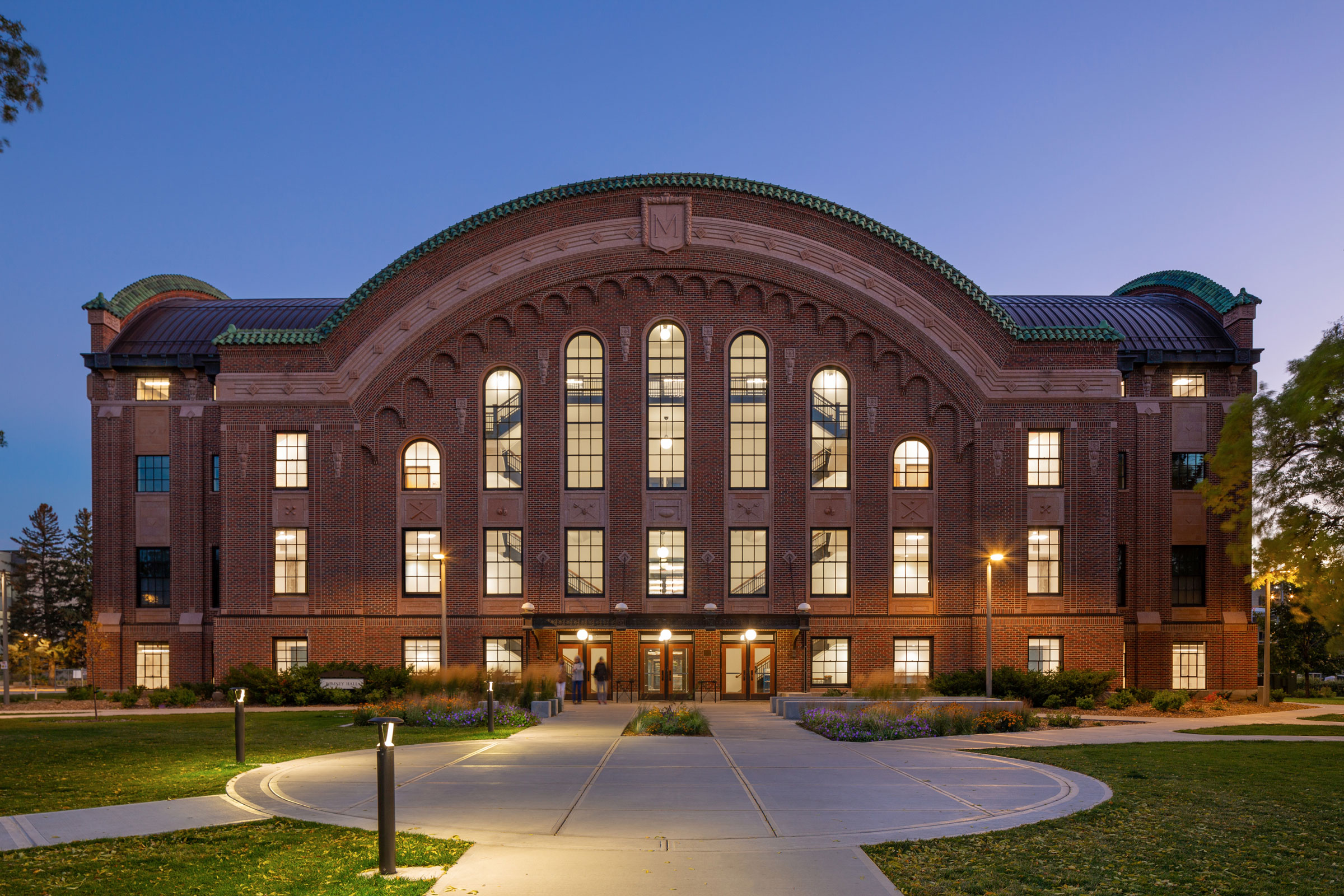
The barrel ends of MSU Romney Hall each feature a curved parapet wall topped by green roofing tile accented with floral terra-cotta tile panels at their corners. Photo by Karl Neumann
Curved or scalloped parapet walls are similar to stepped parapet walls, with the key difference being that they have a curved edge instead of a staircase design. They can be used on both sloped and flat roofs.
Depending on placement the curved parapet wall may serve as both a functional and aesthetically-pleasing architectural feature. This type of parapet is often seen in Mission, Spanish Colonial, and Pueblo-style designs.
Where are Parapet Roofs Most Useful?
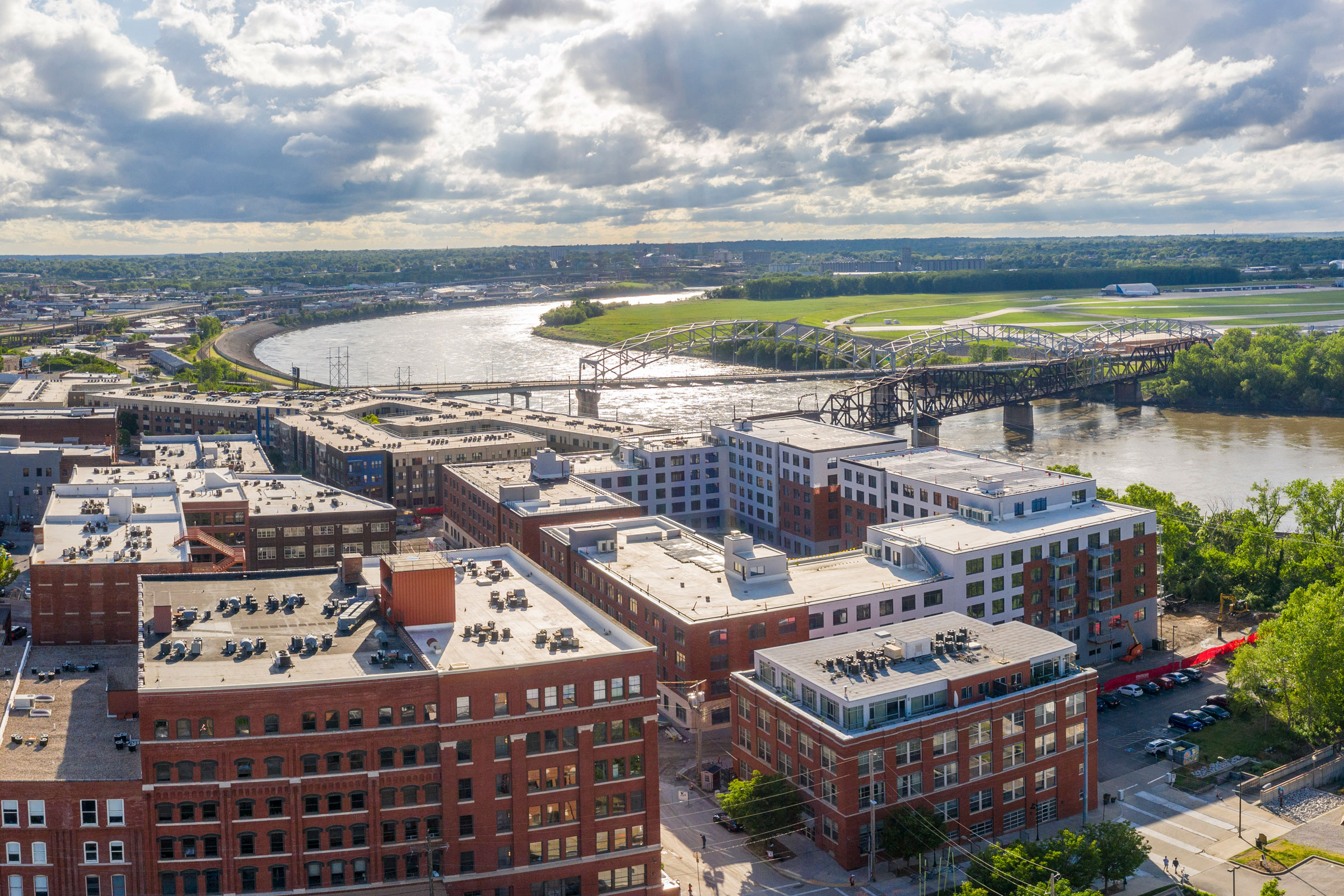
Buildings with flat roofs benefit the most from parapet walls. Photo courtesy of Arnold Development Group
From a practical standpoint any roof can, in theory, benefit from the addition of parapet walls—but certain buildings are better suited to parapets than others. Commercial buildings, large apartment complexes, and any other buildings with flat roofs housing HVAC units or other mechanical equipment, for example, can benefit from the addition of parapet walls as they make it much safer to perform any necessary maintenance.
Similarly, any flat-roofed building that intends to get dual purpose out of their roof by using it as a balcony, terrace, or facilities area will also require a parapet of some height to ensure that occupants do not accidentally fall off.
Sophia Conforti contributed to this article.



